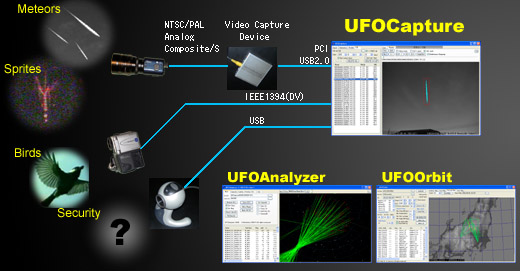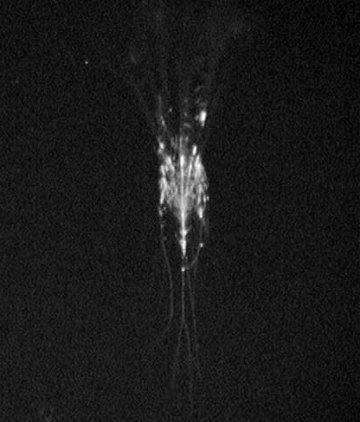EuroSprite 2009
STRANGE LIGHTNING: High above Earth, in the realm of meteors and noctilucent clouds, a strange and beautiful form of lightning dances at the edge of space. Researchers call the bolts "sprites"; they are red, fleeting, and tend to come in bunches. Atmospheric scientist Oscar van der Velde of Sant Vicenç de Castellet, Spain, photographed this specimen on June 5th:
"With my new zoom lens I can now magnify the sky above thunderstorms to get very detailed images of sprites," says van der Velde. "This amazing 'carrot sprite' occurred near the coast of southern France about 250 km away from me."
"Sprites are a true space weather phenomenon," he adds. "They develop in mid-air around 80 km altitude, growing in both directions, first down, then up. This happens when a fierce lightning bolt draws lots of charge from a cloud near Earth's surface. Electric fields [shoot] to the top of Earth's atmosphere--and the result is a sprite. The entire process takes about 20 milliseconds."
Although sprites have been seen, off and on, for at least a century, most scientists did not believe they existed until after 1989 when sprites were photographed by cameras onboard the space shuttle. Now "sprite chasers" routinely photograph sprites from their own homes. "I set up a Watec 902H2 Ultimate security camera on my balcony and used UFOCapture software to catch the sprite," says van der Velde. Give it a try!
diagram: How to Look for Sprites (used with permission of sky-fire.tv)
more images: from Oscar van der Velde of Sant Vicenç de Castellet, Spain; from Damir Segon of Pula, Croatia; from Mike Burdette of Bolivar, Missouri;
![]()
Credit: D. Sentman (U. Alaska) et al., EXL98 Campaign, AFRL, NRL, USAFA, NASA
UFOCapture is motion capture software that starts recording on a hard disk drive of a computer from a few seconds before the action recognized to a few seconds after the action finished.
UFO Capture is software for Microsoft Windows and it is easy to build a satisfying observation system by using various video capture equipments on the market.
equipments on the market.

After UFOCapture was first published in 2003, UFOCapture V2 is now available refined by users' requests and advices on summer of 2005.


Ursid Meteor shower, it was very cloudy but he caught a few.
This is the brightest Lyrid that I have ever seen.
I think Mag -11 is a good estimation.
The diameter of the brightness saturated circle on frame 77 is just like a full moon (or a bit larger) that we see through 6mm lens.
In Japan, we have also captured several Lyrid fire ball this year, but they are dimmer than mag -3.
They have the radiants RA(deg)=272.0+/-1.0 DEC(deg)=33.4+/-0.4 and Vg(km/s)=43.8+/-1.0
Please let us know if you calculate the radiant and the speed of this meteor.
Thank you for showing us.
Congratulations.
sonotaco.jp/forum/
Very bright Lyrid fireball

 Earth's magnetic field:
Earth's magnetic field:

0 Comments:
Post a Comment
<< Home